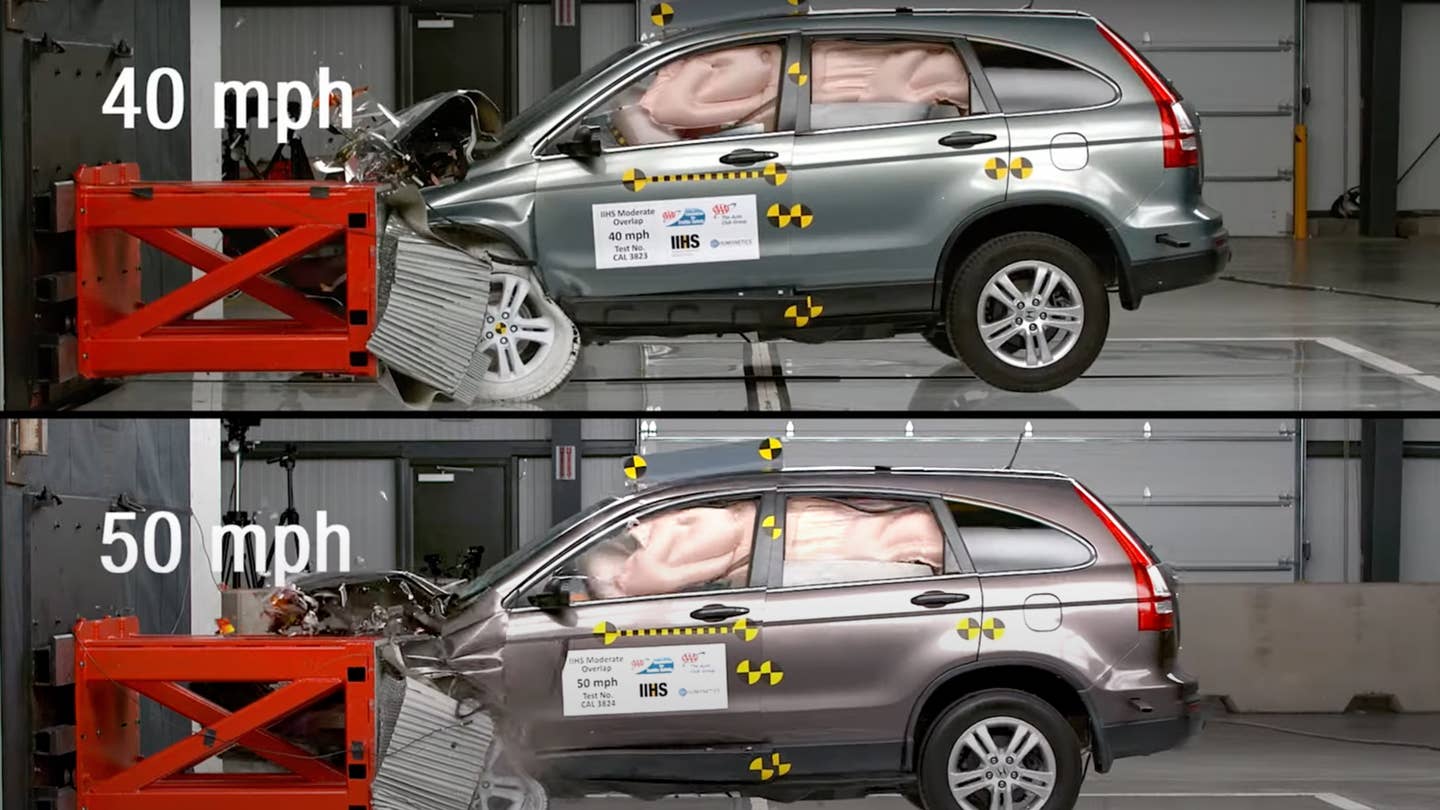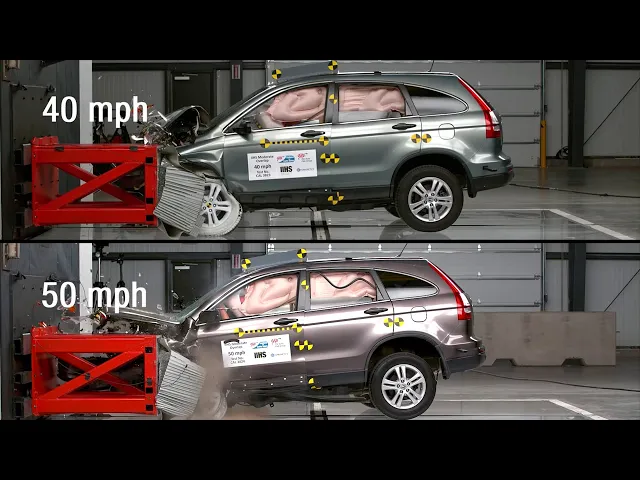It’s the most common question the agency receives, so it’s prepared an answer.

The Insurance Institute of Highway Safety does most of its crash testing at 40 mph. Some tests are done at higher speeds and some at lower speeds, but the bulk of its testing is done at forty. The agency claims it gets numerous questions—and sometimes complaints—about why it doesn’t test at much higher speeds considering most U.S. drivers regularly drive 70 mph or faster on the freeway. The IIHS has its reasons, which it addresses in its most recent YouTube video.
There are three different IIHS frontal impact tests: Updated Moderate Overlap Test, Driver-Side Small Overlap Test, and Passenger-Side Small Overlap Test. All three of these are normally done at 40 mph but no faster, unless it’s for a specific reason. That specific rate is the norm because it’s the average speed of most crashes.
“Our test speed captures the middle of the distribution of real-world crashes, where we know there are serious and severe injuries. We know there are crashes that are more severe but we are capturing the bulk of the total number of crashes. Most crashes are very low severity,” said Raul Arbelaez, Vice President of IIHS’ Vehicle Research Center.
IIHS
In regards to upping the speed to, say, 50 mph, Arbelaez said the following: “Your crash energy increases exponentially with impact velocity, and so if we go from forty to fifty, we’re looking at an over 50% increase in crash energy. There are some unintended consequences that go along with [higher-speed crash testing], including degraded safety in lower severity crashes.”
Vehicle crash safety isn’t the only thing that keeps people safe, though. Roadway design, road laws and their enforcement, and driver behavior also factor into people’s safety on the road. So the sweet spot seems to be at 40 mph, while also continuing research on how to prevent more crashes in the first place.

Got tips? Send ’em to tips@thedrive.com


